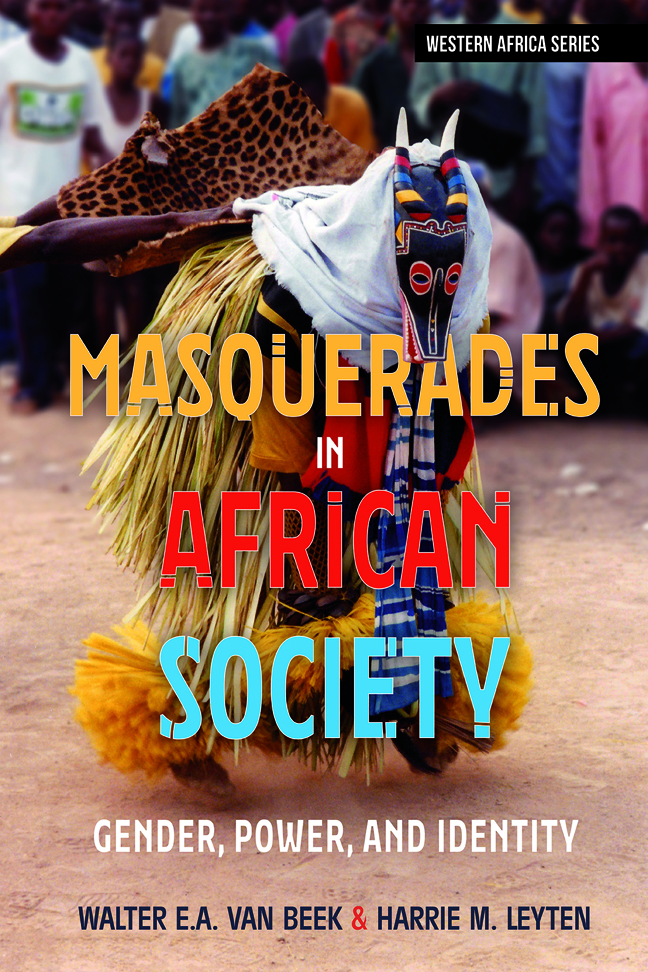Book contents
- Frontmatter
- Dedication
- Contents
- List of Illustrations
- Acknowledgements
- Introduction
- The Mask Crescent: Distribution of Masks and Masking in Africa
- 1 Mask Distribution and Theory
- 2 What is a Mask?
- 3 Masks and Masculinity: Initiation
- 4 Secrecy and Power
- 5 Death and its Masks
- 6 Women: Pivot of the Masks
- 7 Masks and Politics
- 8 Masks and the Order of Things
- 9 Masks and Modernity
- 10 Memories of Power, Power of Memories
- 11 Conclusion
- Bibliography
- Sources for Ethnographic Cases
- Picture Credits
- Index
5 - Death and its Masks
Published online by Cambridge University Press: 22 February 2024
- Frontmatter
- Dedication
- Contents
- List of Illustrations
- Acknowledgements
- Introduction
- The Mask Crescent: Distribution of Masks and Masking in Africa
- 1 Mask Distribution and Theory
- 2 What is a Mask?
- 3 Masks and Masculinity: Initiation
- 4 Secrecy and Power
- 5 Death and its Masks
- 6 Women: Pivot of the Masks
- 7 Masks and Politics
- 8 Masks and the Order of Things
- 9 Masks and Modernity
- 10 Memories of Power, Power of Memories
- 11 Conclusion
- Bibliography
- Sources for Ethnographic Cases
- Picture Credits
- Index
Summary
‘The acceptance of death is the highest point on the way of initiation’
(Hampaté Bâ, in Fölmi 2015: 256)Singing at the mask
Silently gazing at the compound entrance, a dozen men sit in one corner of the courtyard, one of them with a drum. They are tired, as they have just finished over two hours of singing in front of the house of Balugo Say, whose funeral this is. Together they have sung the twelve mask songs, each to its own melody and drum rhythm, each repeated six times. None of the singers was allowed to move, stand up, or talk during the perfor-mance, which went on for hours; but now they are finished. Content after a job well done, they wait for the last phase of the complicated liturgy of the Dogon funeral, for with their singing they have set the stage for the appearance of the mask, to round off the farewell to the deceased. Silently and almost surreptitiously, an ajagai mask walks into the compound, led by an elder. The headpiece of this all-fibre mask consists of a plaited hood with eyes on all sides, its costume a thick flurry of red fibres over black trousers. The two climb the forked ladder onto the roof of Balugo's house. Down in the yard, all watch the mask and its attendant dance alongside all the corners of the roof; nobody utters a word as this mask operates in absolute silence. After dancing, the mask climbs down, enters the house, and takes a few personal belongings from the chest of the deceased. As quietly as it performed, the mask emerges from the house, looks around seemingly without noticing anyone, and then runs to a nearby cavern where it throws Balugo's belongings into a deep crevasse. As a red shadow it disappears between the rocks and houses of the village and never comes back to the house. One by one the singers slowly take to their feet, speak in hushed voices, and go home. Balugo has left now – he has really, truly left; and the long wait for the second funeral is on, to take place in the next years.
In Africa funerals are core rituals. ‘Your funeral is the most beautiful day of your life’, is an expression often heard about African funerals.
- Type
- Chapter
- Information
- Masquerades in African SocietyGender, Power and Identity, pp. 149 - 180Publisher: Boydell & BrewerPrint publication year: 2023

